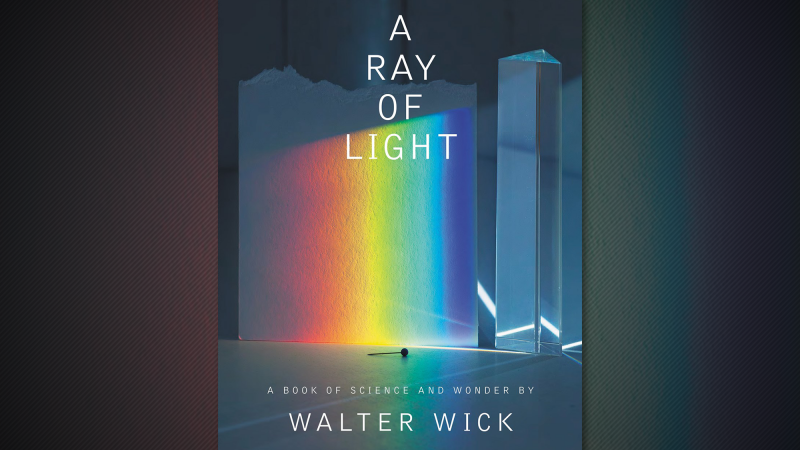What is light made of? How does light relate to color? How do telescopes work?
Walter Wick—the bestselling creator of A Drop of Water and co-creator of the I Spy series—answers these questions and more in his upcoming book A Ray of Light. Pairing mesmerizing photographs with simple text and scientific observations, A Ray of Light demonstrates that science and art both offer ways to observe the world around us.
Below, Wick gives us a behind-the-scenes peek of A Ray of Light — how he set up the photos, why he chose to include certain experiments, and even how unexpected encounters served as inspiration!
Inside his studio
“This is what my studio in Miami looked like when A Ray of Light was nearly complete. I wrote the text after the pictures were complete, and continued to edit the text as needed during the writing phase. In some cases, I took new photographs to fill gaps in the narrative.
At the end of the video, you can see the set I built, which served as the stage for many of my experiments. You can think of my style of photography as theater. Even though the experiments were true to science, the props and sets were staged to highlight the drama, beauty and timelessness of the subject matter.”—Walter Wick
The Color Spectrum
“It was important to me to use a domestic setting as the backdrop for my experiments. The paneled walls could be configured in different ways so I could accommodate special needs of each spread.
This is an earlier version of prism photo seen in the segment on the Color Spectrum (pp. 16-17). I redirected sunlight from the outside by way of a mirror mounted on a tripod (not shown) so I could position it as needed in accordance with the movement of the sun.”—Walter Wick
Here's the final spread:
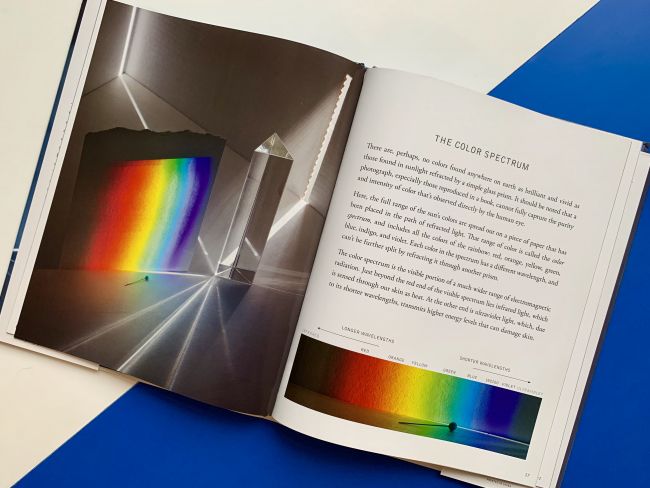
Pigments
“I wanted the reader to see pigments in raw form, as if they've just been extracted from the earth (pp. 24-25). Fans or art history might appreciate that I obtained some of the pigments during a trip to Holland, from sources that have supplied painters like Rembrandt and Vermeer for centuries.” —Walter Wick
Here's the final spread: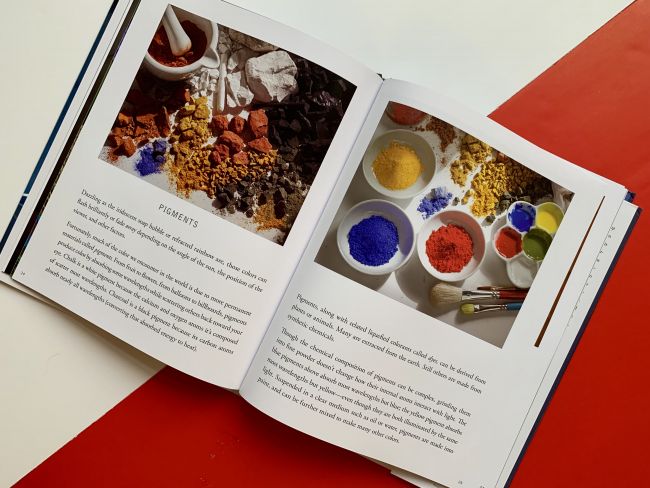
The Lens
“This video pertains to the "The Lens" section of the book (pages 26-27), where I held a magnifying glass between the sun and a match. The light energy passed through the 5" diameter glass andconcentrated in a single point, causing the match to burst into flame.”—Walter Wick
Here's the final spread:
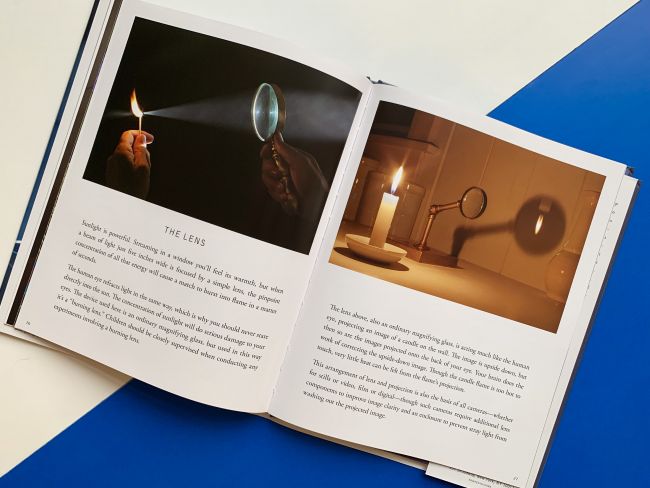
Seeing the Unseen
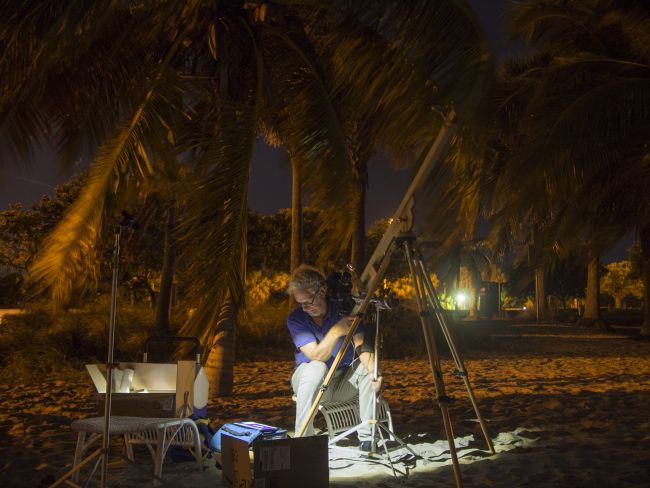
“This photo was taken on a public beach on Virgina Key, Miami. To the right of my head is the camera I used to photograph the moon with the telescope. The telescope itself was made so that its essential components – the two lenses – would be clearly visible in A Ray of Light. The visibility of the moon was actually better when looking through the scope than it was using the camera.
Due to the difficulty of photographing through the scope, I had some doubts about whether this experiment (p. 29) would end up in the book. Then a couple came by, and when I invited them to look through the telescope to see the moon, they were amazed they could see craters with such a simple device. Their enthusiasm lifted my spirits so I redoubled my efforts make it work.”—Walter Wick
Here's the final spread: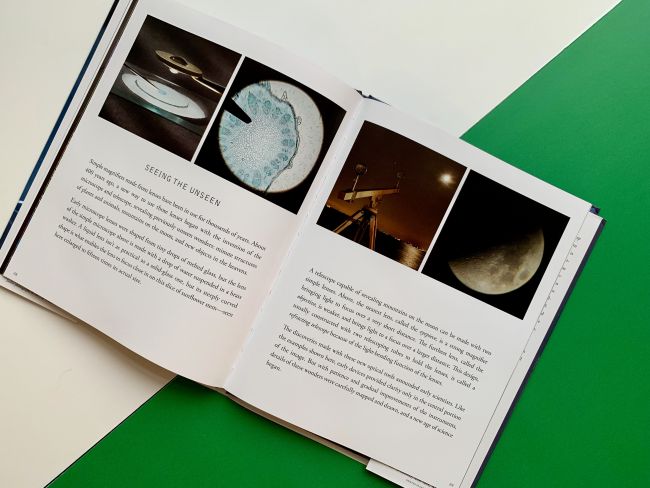
Every Ray of Light
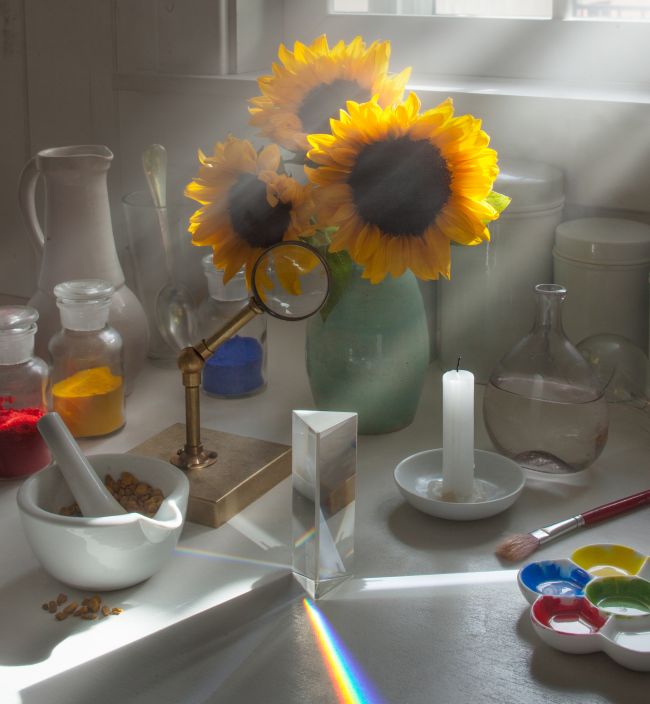
“This photograph is the final spread of the book. It’s a coda, in that the text changes in tone from explaining what’s going on in the photo to appreciating the beauty and drama of light for its own sake. The reader will recognize the props from previous spreads, which in turn have helped prep them to see an everyday scene like this—sunlight streaming through a window—with an entirely new understanding, and with an appreciation they might never have, otherwise.”—Walter Wick

